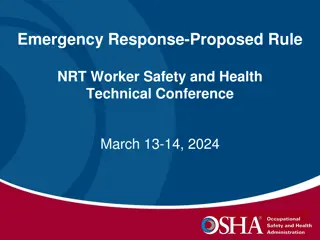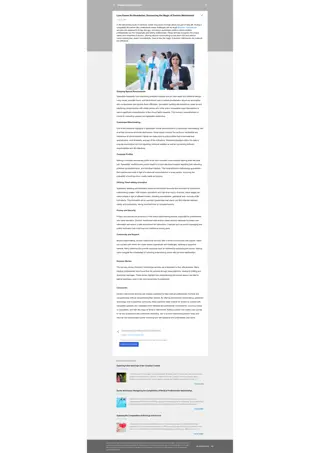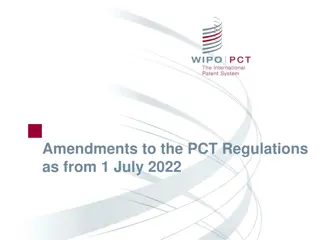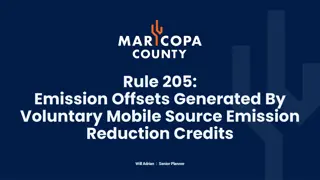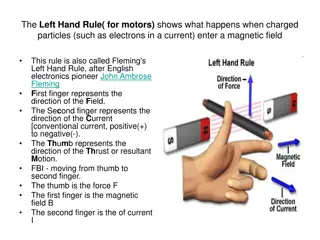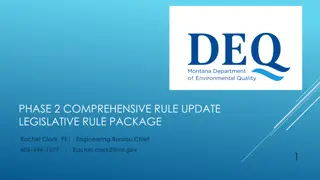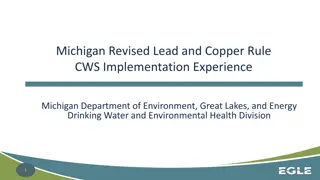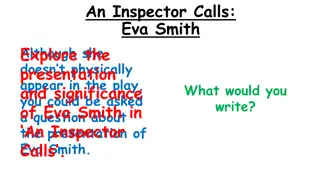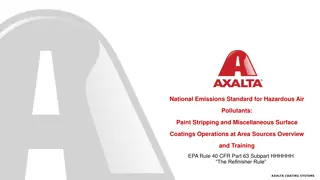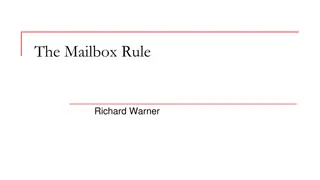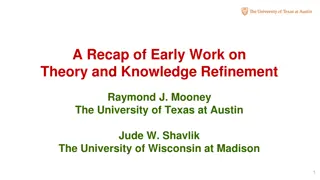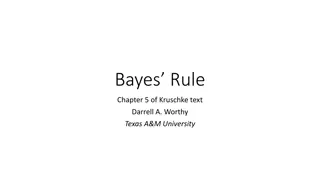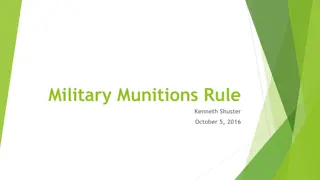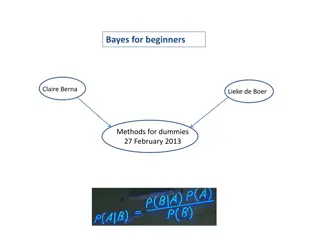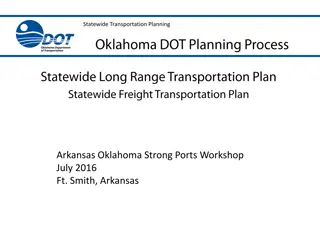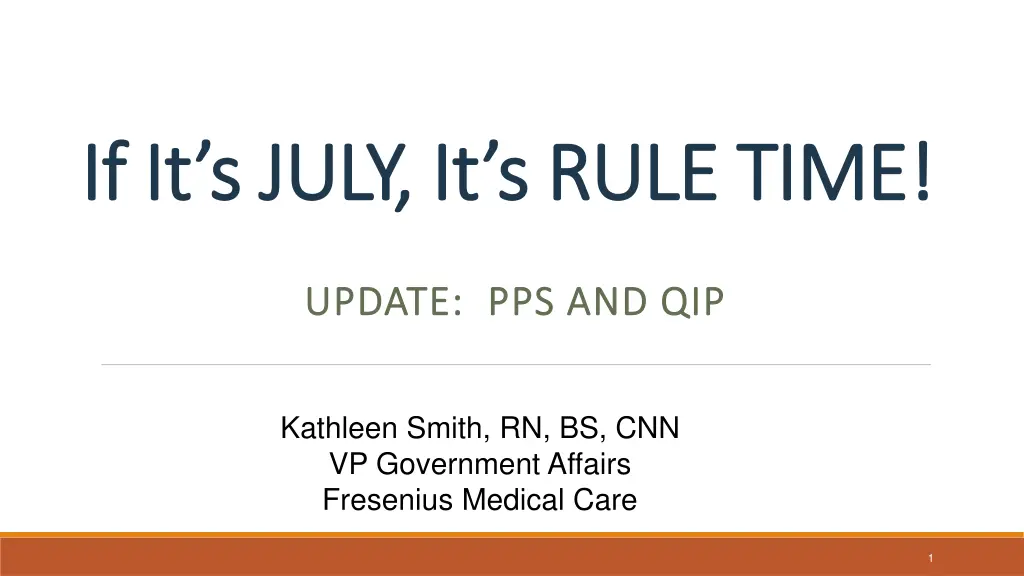
ESRD PPS Rule Update and AKI Payment Changes
Learn about the recent updates in the End-Stage Renal Disease Prospective Payment System (ESRD PPS) rule, including changes in payment mechanisms, acute kidney injury (AKI) payment adjustments, and proposed rule summaries for July 2017. Understand how CMS is addressing AKI services and billing requirements. Stay informed on important developments in renal care policies and regulations.
Uploaded on | 2 Views
Download Presentation

Please find below an Image/Link to download the presentation.
The content on the website is provided AS IS for your information and personal use only. It may not be sold, licensed, or shared on other websites without obtaining consent from the author. If you encounter any issues during the download, it is possible that the publisher has removed the file from their server.
You are allowed to download the files provided on this website for personal or commercial use, subject to the condition that they are used lawfully. All files are the property of their respective owners.
The content on the website is provided AS IS for your information and personal use only. It may not be sold, licensed, or shared on other websites without obtaining consent from the author.
E N D
Presentation Transcript
If Its JULY, Its RULE TIME! If It s JULY, It s RULE TIME! UPDATE: PPS AND QIP UPDATE: PPS AND QIP Kathleen Smith, RN, BS, CNN VP Government Affairs Fresenius Medical Care 1
Take Take- -Aways Aways Change in ESRD PPS Base Rate Equivalency Payment Mechanism (for more than 3 tmts/week) Retain medical justification for >3 tmts/week and training treatment limits Budget neutral home dialysis training rate Retain wage index floor of 0.4000 Continue to set outlier percent target at 1% Acute Kidney Injury 2
Important New Issue: Acute Kidney Injury Important New Issue: Acute Kidney Injury CMS changed the site of service for out-patient dialysis for individuals with AKI from the hospital outpatient department (HOPD) to outpatient dialysis facilities & HOPDs. Payment rate is equal to ESRD PPS CY-2017 ($231.04) Wage index adjustment will be applied NO OTHER PAYMENT ADJUSTMENTS Individuals with AKI are NOT PAID under the ESRD PPS Facilities can bill for non-renal drugs/biologicals, lab services, and supplies that would have been furnished in the HOPD No changes to Conditions for Coverage 3
Acute Kidney Injury (continued) Acute Kidney Injury (continued) Utilization of services may differ for those with AKI, so CMS will pay for ALL hemodialysis treatments for AKI patients in a week Home dialysis benefit will not be extended to AKI patients because of need for supervision CMS seeks comment for future rulemaking as to whether revised Conditions for Coverage include: Addressing AKI in the CfCs Should care planning for AKI patients be addressed differently 4
Acute Kidney Injury (continued) Acute Kidney Injury (continued) CMS intends to monitor utilization of dialysis, separately billable items & services. Billing: Specific condition code AKI diagnosis Appropriate revenue code CPT code Requirements will be issued in sub-regulatory guidance 5
Summary of Proposed PPS Rule Summary of Proposed PPS Rule Increase PPS base rate by 0.35% = $231.04 Equivalency Payment Mechanism Implemented July 1, 2017: determines per treatment rate when >3 tmts/week on the claim Retains medical justification for >3 tmts/week & training tmt limits Increase home training payment by $45.41 to total payment of $95.97 in a budget neutral manner by reducing base rate $0.06 Modify claims and cost reports for better understanding of training costs 6
Equivalency Payment Mechanism Equivalency Payment Mechanism for >3 treatments per week for >3 treatments per week CMS responded to concerns: 13 or 14 treatments/month can t be reported on the claim Equivalency Payment Mechanism (for more than 3 tmts/week) Retain medical justification for >3 tmts/week and training treatment limits Budget neutral home dialysis training rate Retain wage index floor of 0.4000 Continue to set outlier percent target at 1% 7
Equivalency Payment Mechanism Equivalency Payment Mechanism for >3 treatments per week for >3 treatments per week Equivalency Payment Mechanism (for >3 tmts/week): e.g. 5 tmts/week (Adjusted Base Rate * 3/5) + (Outlier Payment * 3/5) = per treatment payment Retain medical justification for >3 tmts/week and training treatment limits Budget neutral home dialysis training rate Retain wage index floor of 0.4000 Continue to set outlier percent target at 1% 8
CMS notes CMS notes t that hat the intent of this proposal is to provide a mechanism for payment for evolving technologies that provide for a different schedule of treatments that accommodate a patent s preference and thereby improve that patient s quality of life. In the event that a beneficiary receives traditional HD treatments in excess of 3 per week without medical justification for the additional treatments, these additional treatments will not be paid. 9
CMS notes CMS notes t that hat This policy would not be applied to home and self-dialysis training treatments; facilities would receive the full ESRD PPS base rate during training. It is investigating payments and costs related to training and plans to refine the training payment in the future. (PD training limited to 15; HD training limited to 25.) 10
Training Add Training Add- -on Payment Adjustment on Payment Adjustment Clarification: CMS never intended that the training add-on payment would reimburse for all costs. Add-on for RN training time + ESRD PPS amount = Medicare training treatment payment Sub-regulatory guidance will be issued re retraining tmts. 11
Home Dialysis Training: CMS Plans Home Dialysis Training: CMS Plans In-depth analysis of cost report data elements Comprehensive audits of cost reports (CR) Updating the independent facility CR (more granularity) Training time: KDOQI guidelines - HD-4hrs, PD-2hrs Current payment reflects 1.5 hrs CMS proposes to increase the number of hours using a wtd avg formula until it has sufficient data re what adequate payment should be 12
HD Training Add HD Training Add- -on: CMS Proposes on: CMS Proposes to base the payment for HD training on 2.66 hrs of treatment Based on weighted avg: PD @ 67% of tmts at 2 hrs/tmt and HD @ 33% of tmts at 4 hrs/tmt Result in training add-on increased by $45.41 to $95.57. Will be made in a budget neutral manner, reducing base rate by $0.06. 13
Summary of PY 2018 Summary of PY 2018- -20 QIP 20 QIP PY 2018 Correct the description of the Small Facility Adjuster to clarify the definition of the national mean measure rate is set at the benchmark, which is the case with other measures 14
Summary of PY 2018 Summary of PY 2018- -20 QIP 20 QIP PY 2019 Add the expanded NHSN Dialysis Event Reporting Measure Create a new NHSN BSI Measure Topic, weighting the NHSN BSI Clinical Measure at 60% and the NHSN Dialysis Event Reporting Measure at 40% Create a new Safety Domain & change domain weights Continue data validation studies 15
Summary of PY 2018 Summary of PY 2018- -20 QIP 20 QIP PY 2020 Replace the Mineral Metabolism Reporting Measure with a Serum Phosphorous Reporting Measure Add a standardized Hospital Ratio Measure & an Ultrafiltration Rate Reporting Measure Set the performance period at CY 2018, except for the NHSN Healthcare Personnel Influenza Vaccination Reporting Measure, which would be 10/1/16 through 3/31/17. 16
QIP Measure Process QIP Measure Process Remember, CMS goal for ESRD QIP measures Promote high-quality care Strengthen the goals of the National Quality Strategy MIPPA requirement: Use National Quality Forum (NQF) endorsed measures when available CMS may add measures if NQF endorsed measures do not exist or are not sufficient for the topic area The law requires measures on anemia & adequacy 17
Knowledge Is Key Knowledge Is Key Stay current with the QIP measures Be sure ALL team members (RNs, PCTs, MSWs, RDs, & physicians) are aware of QIP and the implications for payment You must meet the performance standard to avoid payment reduction: aim for much higher! It is the right thing to do. 18

